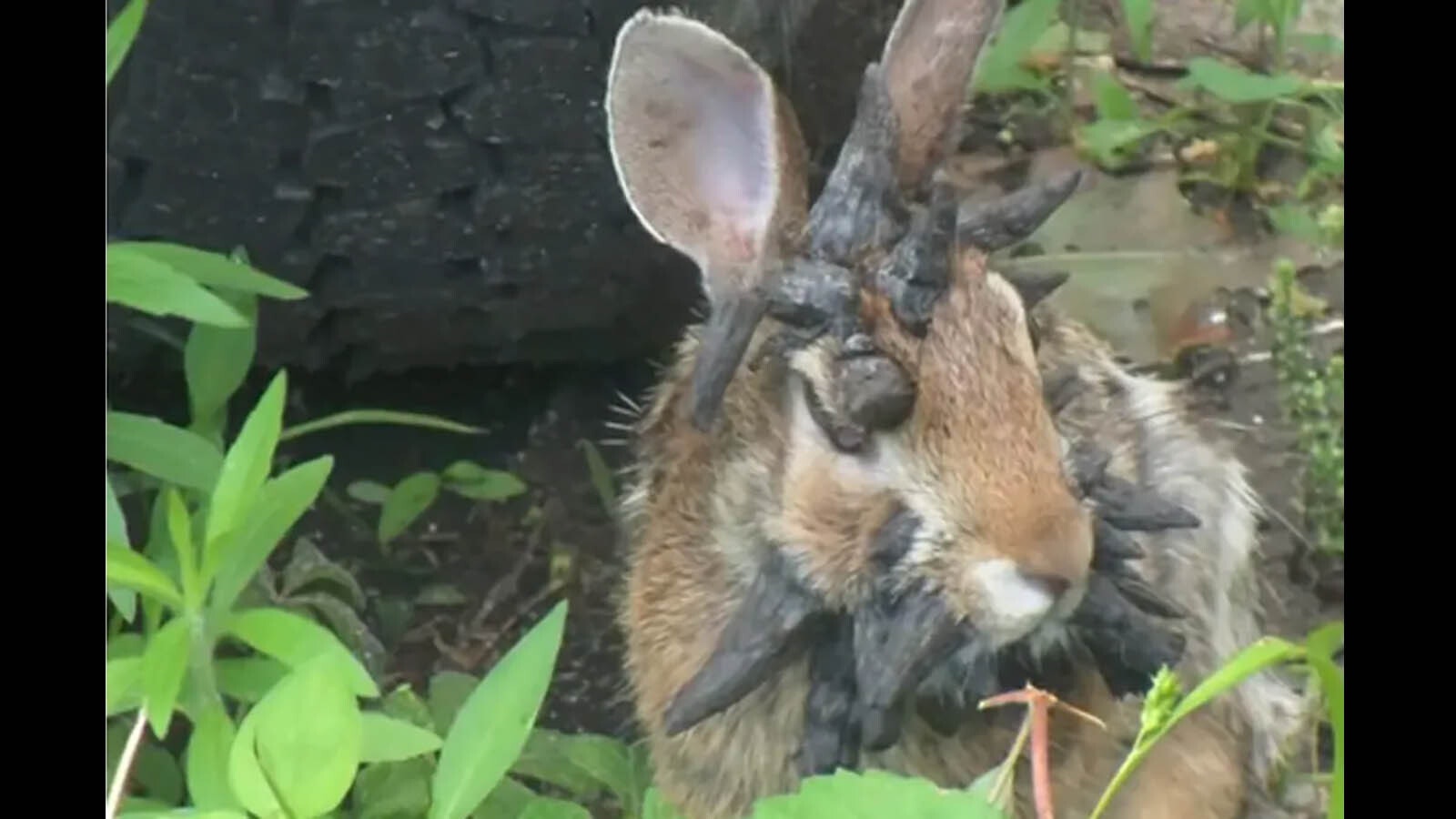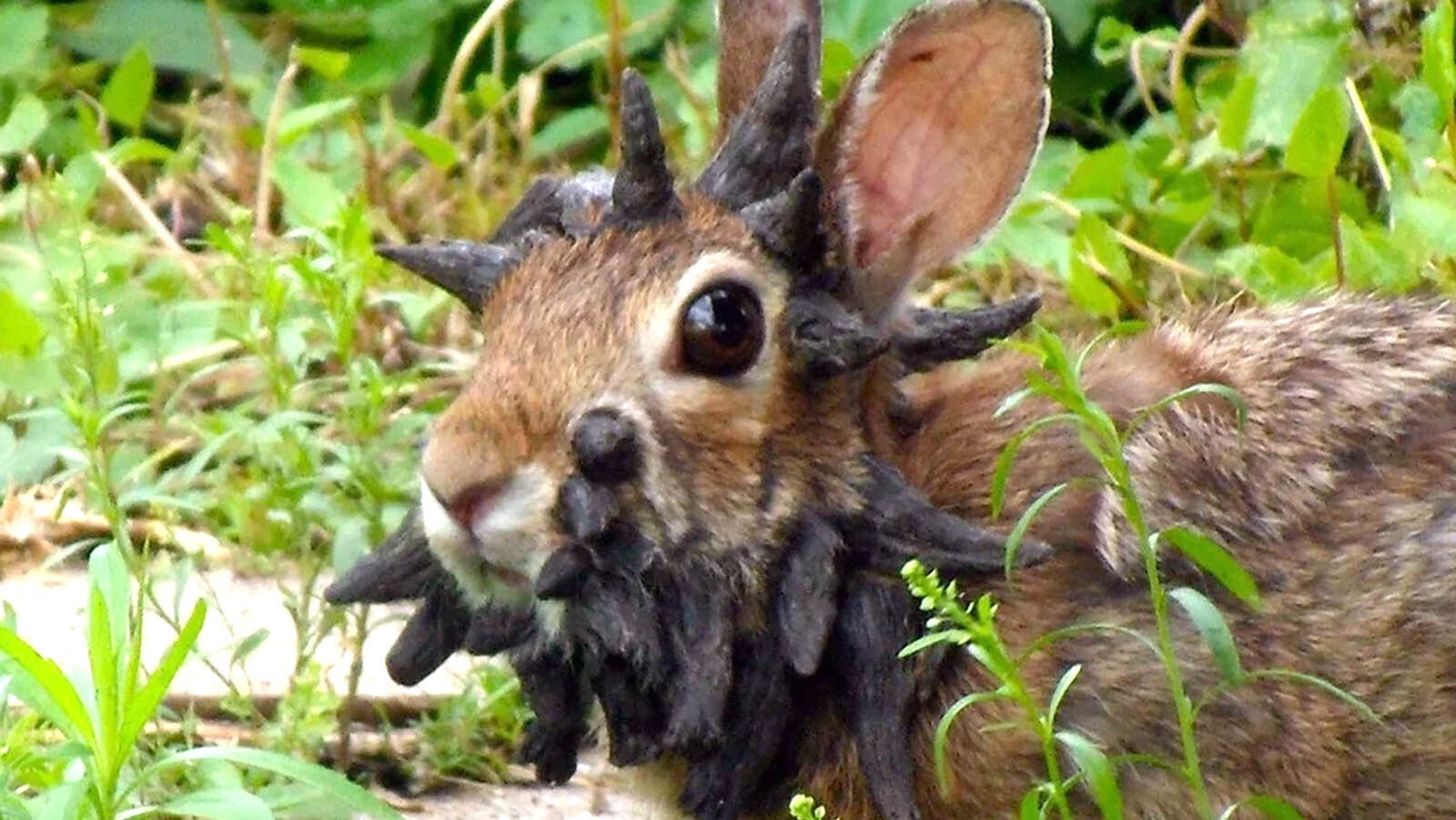Wyoming’s favorite mythical creature, the jackalope, is real — or at least rooted in reality.
The legend of the mighty antlered hare probably started with pioneers in the 1800s, a biologist said. After seeing pronghorn in Wyoming, and then catching glimpses of rabbits with unusual viral infections that can cause them to grow “horns,” the pioneers may have thought the two were connected.
The horn-like growths on the heads and faces of North American rabbits and hares start with viral lesions, biologist Jenella Loye told Cowboy State Daily. She recently retired from the department of Entomology at the University of California-Davis.
She’s fascinated with how folklore can be rooted in scientific reality. When she read a recent Cowboy State Daily story about the special place the jackalope holds in Wyomingites’ hearts, she reached out to share the science behind the legend.
Pioneer Misconceptions
When pioneers started pushing westward in the 1800s, they saw all sorts of flora and fauna that was new and occasionally baffling to them. And this frequently led to misconceptions.
For example, when they arrived in the territory that became Wyoming and some of the neighboring states, they caught their first sight of pronghorn. Having no clue what they were, they started calling them “antelope,” assuming that they must be related to Africa’s antelope, Loye said.
There’s no relation. In fact, pronghorn aren’t related to any other living creature, they’re a unique species.
But, the moniker “antelope” stuck, and even the Wyoming Game and Fish Department still uses it in reference to the iconic speedsters of the sage flats and high prairies.
And when pioneers starting running into rabbits with those weird horn-like growths, they put two-and-two together. Or, at least thought they did, Loye said.

And So … ‘Jackalopes’
“They might have thought, ‘They (pronghorn and rabbits) both have horns, and they both have them on the front of their heads. So, they must be related,’” she said.
And thus, the honorable title “jackalope,” or a critter thought to be a cross between jackrabbits and the misnamed antelope.
“The cool thing is that a lot of folklore came from some sort of observable phenomenon,” Loye said.
Jackalope Rescues Australia From Bunny Invasion
Pioneers had never seen anything like rabbits with “horns” because European rabbits are a different species than those in North America, she said. So, when European rabbits are infected with those viruses, which are usually transmitted by mosquitos, they don’t grow horns.
Instead, the viruses attack their internal organs and kill them, Loye said. It’s thought that European rabbits are less adapted to mosquito-borne diseases because they sleep underground in burrows, where they’re less likely to be exposed to the airborne blood suckers.
North American rabbits, however, rest and sleep above ground in “scrapes,” which means they get feasted on by mosquitos regularly and are, in turn, better adapted to the diseases they carry, Loye said.
That ended up benefiting Australians, she added.
European rabbits were introduced Down Under and started, well, breeding like bunnies.
Before long, “Australia was overrun with European rabbits,” which were a destructive invasive species there, Loye said.
That was, until scientists figured out that if they introduced the viruses that infected North American rabbits, that might give the Aussies a fighting chance against the bunny apocalypse.
It worked, she said. The viruses killed the invasive rabbits in droves. Although a few eventually developed the same immunity as their North American cousins, their population was severely cut back.
And so, not only is the jackalope a beloved Cowboy State icon, it also played a roundabout part in saving Australia, making it an international hare hero as well.
Mark Heinz can be reached at mark@cowboystatedaily.com.





